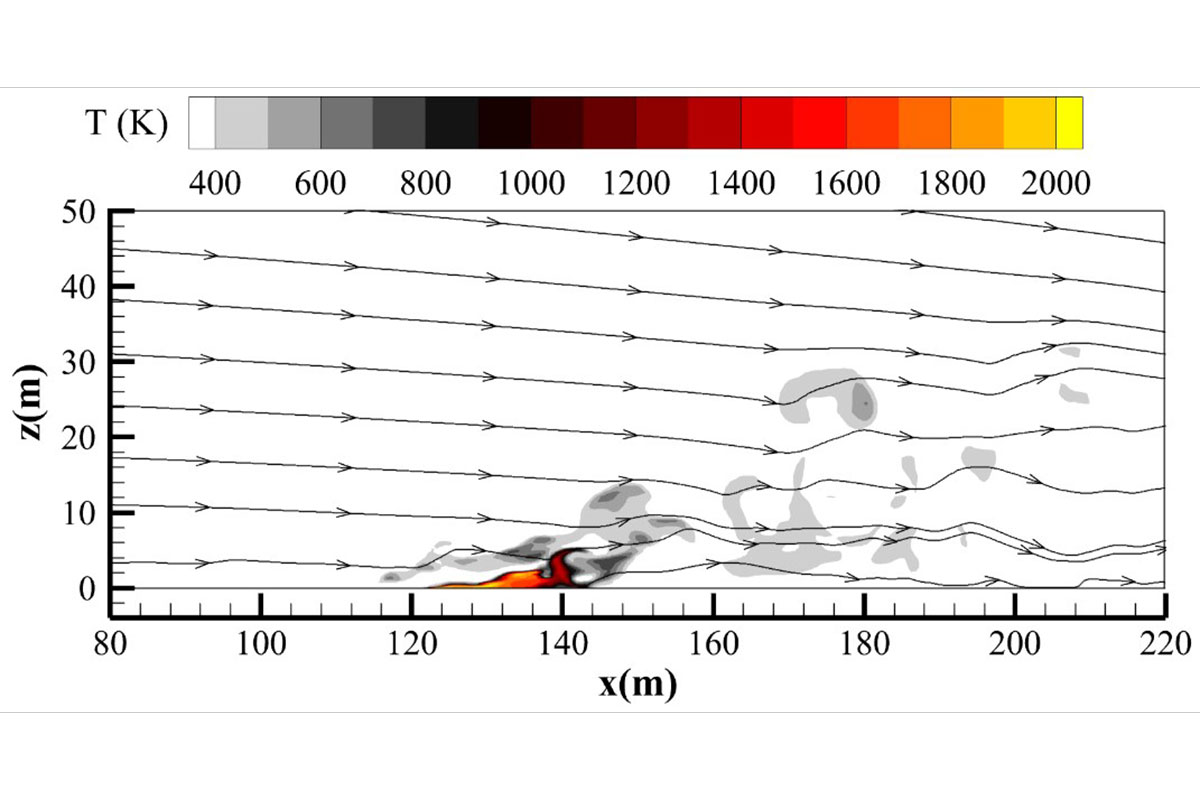Numerical Simulation of Wind-Driven Shrubland-Fire Spread: A Parametric Study
Project Details
- Student(s): Charbel Farhat, Charbel Karam, Nancy Saab
- Advisor(s): Dr. Gilbert Accary
- Department: Industrial & Mechanical
- Academic Year(s): 2024-2025
Abstract
This study investigates the dynamics of wind-driven shrubland-fire spread, focusing on the relationship between the rate of spread (scaled by wind speed) and Byram’s convective number. A parametric study was conducted using FireStar3D – a physics-based, multiphase, wildfire, CFD model, and the paper reports the results of 76 numerical simulations conducted by systematically varying wind speed, fuel cover height, fuel volume-fraction, and fuel moisture-content. The results show that for a wind-driven fire, the rate of spread scales consistently with wind speed, aligning with the 10% rule of thumb. While Byram’s convective number inherently includes the actions of wind speed, fuel moisture content, and fuel height on fire propagation, results show that fuel volume-fraction has an additional action on the rate of spread, significantly affecting it through its impact on convective heat transfer to unburned fuel. Moreover, the paper investigates the fire establishment phase – the transitional phase preceding steady fire spread. Results show that the fire spreads slightly faster during this initial phase compared to steady state, and that the duration of the fire establishment phase, scaled by the fuel-heating characteristic time, is a weak function of Byram’s convective number but a strong function of the fuel volume-fraction.
Published Article: Gilbert Accary, Abdel-Razzak Tayba, Charbel Farhat, Charbel Karam, Nancy Saab. Numerical Simulation of Wind-Driven Shrubland-Fire Spread: A Parametric Study. Submitted to International Journal of Wildland Fire.
